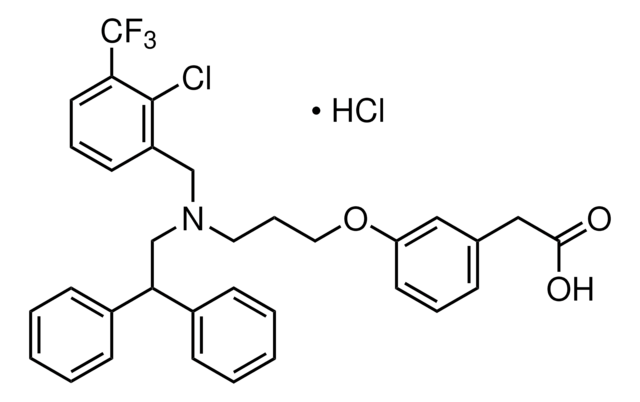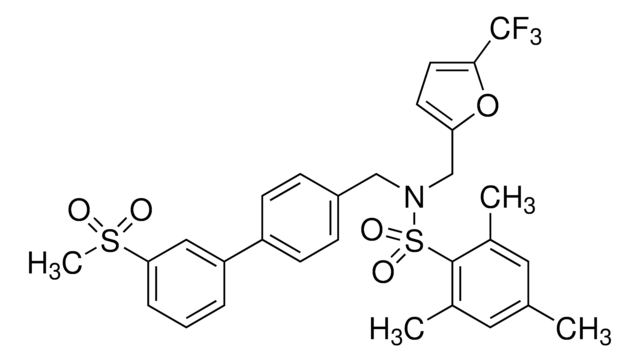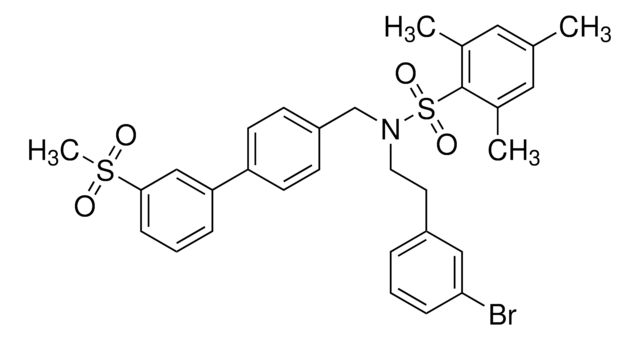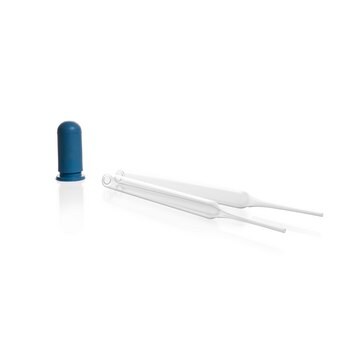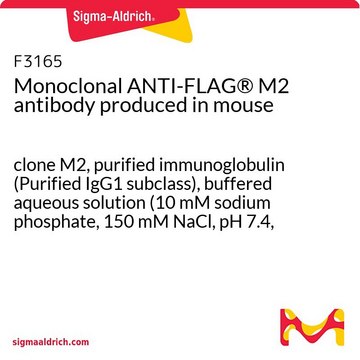おすすめの製品
品質水準
アッセイ
≥98% (HPLC)
フォーム
powder
色
white to beige
溶解性
DMSO: 5 mg/mL, clear (warmed)
保管温度
2-8°C
SMILES記法
[S](=O)(=O)(N(Cc4[o]c(cc4)C(=O)OCC)Cc2ccc(cc2)c3cc(ccc3)[S](=O)(=O)C)c1c(cc(cc1C)C)C
InChI
1S/C31H33NO7S2/c1-6-38-31(33)29-15-14-27(39-29)20-32(41(36,37)30-22(3)16-21(2)17-23(30)4)19-24-10-12-25(13-11-24)26-8-7-9-28(18-26)40(5,34)35/h7-18H,6,19-20H2,1-5H3
InChI Key
HDZWHJYZJWLTAG-UHFFFAOYSA-N
関連するカテゴリー
生物化学的/生理学的作用
SR9238 is liver selective LXR inverse agonist with high potency for both LXRα and LXRβ with an IC50 of 214 nM for LXRα and 43 nM for LXRβ. Metabolic syndrome is often accompanied by liver problems, such as fatty liver (nonalcoholic hepatosteatosis), associated with increased lipogenesis. Liver X receptors α and β (LXRα and LXRβ) are known to induce lipogenesis by increasing transcription of lipogenic enzyme genes, so it was hoped LXR antagonists might be of use in fatty liver. In a mouse model of nonalcoholic hepatosteatosis, SR9238 reduced the expression of lipogenic genes, and suppressed hepatic lipogenesis, inflammation and hepatic lipid accumulation. It was also effective in reduction of hepatic fibrosis in another study. Additionally in diet induced obese mice, SR9238 suppressed plasma cholesterol levels.
SR9238 is liver selective LXR inverse agonist with high potency for both LXRα and LXRβ.
保管分類コード
11 - Combustible Solids
WGK
WGK 3
引火点(°F)
Not applicable
引火点(℃)
Not applicable
最新バージョンのいずれかを選択してください:
Grace Ampem et al.
Cell and tissue research, 378(1), 81-96 (2019-04-24)
Self-renewal of macrophages is important for the healthy development and replenishment of tissue-resident macrophage pools. How this mechanism is controlled by endocrine signals is still largely unexplored. Here, we show that the endocrine disruptor bisphenol A (BPA) increases macrophage self-renewal.
ライフサイエンス、有機合成、材料科学、クロマトグラフィー、分析など、あらゆる分野の研究に経験のあるメンバーがおります。.
製品に関するお問い合わせはこちら(テクニカルサービス)